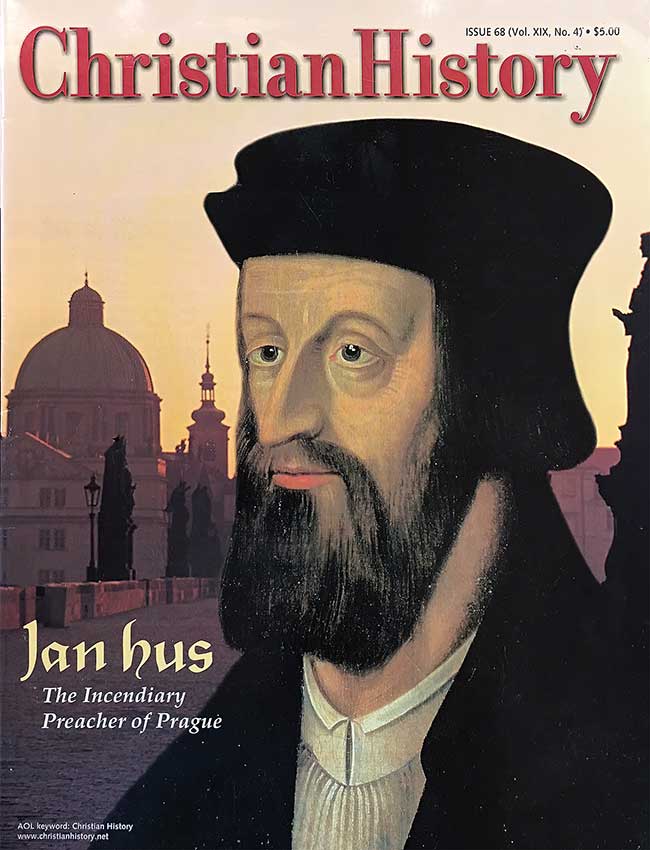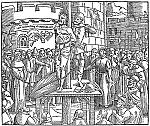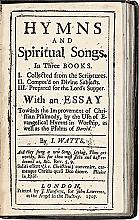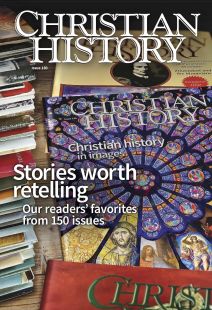Moments that mattered

Behind every issue of CH is a story—and some are more memorable than others! We asked a few of our editors and advisors this question: “What issue impacted you the most?” Here are the moments that have stuck with them.
Baptism by fire?
My first issue as editor of Christian History was a baptism by fire. The previous editor had selected Jan Hus as the topic (issue #68), but he was gone by the time we were planning the issue, so I had to oversee the project start-to-finish—despite the fact that I had never heard of Jan Hus before! I struggled to find authors until I connected via email with Thomas Fudge in New Zealand. (He invited the whole CH staff to visit, but sadly, I’ve still never been to New Zealand nor ever met Prof. Fudge.) I struggled to find images too, until a box of mostly unlabeled prints arrived in the mail from the National Library of the Czech Republic. Art director Rai Whitlock performed miracles to bring that issue up to the aesthetic level that CH readers expected and deserved. This experience taught me to ask for help and to lean into the strengths of the people around me, big lessons for a 23-year-old just starting her career. —Elesha Coffman, associate professor of history, Baylor University
From father to son
My dad started CH in 1982, and I helped him occasionally, but it was always his deal. When the magazine returned to CHI from Christianity Today International in 2010, Dad wanted to publish issue #100 to recognize the King James Bible’s 400th anniversary. I helped orchestrate the magazine’s return as his health declined in his fight against cancer.
In early January of 2011, Dad was called home. To my great shock and surprise, the CHI board appointed me president. I remember waking up about six weeks after Dad graduated realizing that if his dream of publishing issue #100 was to happen, I had to take the lead. I remember just laughing, saying to the Lord,
I’m the least likely person who should be called to this job. I’m not a historian, I’m not a theologian, and I’ve had a lifelong struggle with dyslexia.
But I felt the Lord saying, “I’m calling you at this point, and I will help bring along the people needed to accomplish this.”
I also felt led to publish CH on a donation basis with no subscription fee. I agreed to serve as executive editor for issue #100. All team members pressed on even with Dad’s graduation. Issue #100 was published and mailed in the spring of 2011. We sent the issue out to all the former subscribers, explaining the situation and telling them that, if they’d like to see Christian History continue, they should send a donation to help make that possible. The response shocked us. We received thousands of donations. The team agreed to publish issue #101, and we’ve continued publishing for the last 12 years, amazingly, with quite a few of the same team members. —Bill Curtis, executive editor, CH
“Do, a deer, a female deer”
As a church musician (for 60 years now), I am devoted to helping people praise God in song. Perhaps that’s why I particularly enjoyed telling Christian History readers about “The Original Do, Re, Mi” (issue #93) and the Benedictine monk who not only invented a way to name the notes of the scale, but developed a system of lines and spaces that would allow us to write them out so that others could easily join in the joy of music making. What didn’t show up in my article was the fun I had reading the treatise on music written by that Italian monk (Guido d’Arezzo). Who knew that Wheaton College’s Buswell Library had a copy of that medieval treatise in its collection and that I could get paid for sitting there and reading Guido’s Micrologus? It’s amazing how after 13 centuries, Guido’s insights into music affect me as a composer. —David Neff, former editor-in-chief, Christianity Today; director of music, Church of the Nativity and Holy Comforter
Troubled and blessed
Over the 11 years I spent at CH as managing editor, our issues enlightened, amused, educated, challenged, convicted, blessed, and even perturbed me. Out of all of those experiences, though, two stand out the most. The first was issue #133 on Christian-Jewish relations. Readers had long been clamoring for a follow-up to our issue #74 on Christian-Muslim relations, and I was happy to oblige—but I did not know what I was getting myself into. Every story was fraught with pain, from Christianity’s ascendancy in the early Roman Empire to medieval anti-Semitism to Luther’s legacy to the Holocaust—right down to today. I wept more than once, and I have not been the same writer, preacher, or believer since.
The second experience was a surprise in the other direction—our recent issue #148 on Lilias Trotter. Once again I did not know what I was getting into, but this time all the revelations were delighted ones as I came to know a gifted Christian artist who helped me see the world in a new way. Again, I have not been the same writer, preacher, or believer since.—Jennifer Woodruff Tait, senior editor, CH
Two thousand years
Such a privilege serving as CH editorial advisor from issues #25 through #102! Our #28, The 100 Most Important Events in Church History, was epic! Per editor Kevin Miller’s 1990 letter:
I need your help. So far . . . we have not given readers a broad overview, a general introduction to the 2,000 year sweep of Christian history.
What reflection, interconnection, and translation of The Story! Our questionnaire reached 500 church historians—followed by advisory board (Blumhofer, George, Gonzalez, Kerr, Marty, Noll, Shelley, Tucker, Wright, et al.) edits, highlighting 25 events. Animating Harvard studies, beginning Bethel Seminary teaching, this has ever shaped my approach to Christian history (see my June 15, 2023, CH blog).
Then, in 1998, issue #60 addressed How the Irish Were Saved. My brief “Be Thou My Vision” essay echoed favorite music, family roots, and historic missions. Larger research: how did this only reach English hymnals in 1919, and why’s the spiritual warfare verse—“Be Thou my battle shield, sword for the fight, be Thou my dignity, Thou my delight”—rarely included? Also, perhaps, from Celtic: “I Thy true child, Thou in me dwelling, at one, reconciled?” Theologies and cultures!—James D. Smith III, professor, Richmont Graduate University and Pacific Theological Seminary; professor emeritus, Bethel University; associate pastor, La Jolla Christian Fellowship CH
By Elesha Coffman, Bill Curtis, David Neff, Jennifer Woodruff Tait,
[Christian History originally published this article in Christian History Issue #150 in 2024]
Elesha Coffman is associate professor of history at Baylor University. Bill Curtis: see History of CH. David Neff is former editor-in-chief of Christianity Today and director of music at the Church of the Nativity and Holy Comforter. James D. Smith III is a professor at Richmont Graduate University and Pacific Theological Seminary; emeritus professor at Bethel University; and associate pastor at La Jolla Christian Fellowship. He has been associated with CH since 1989. Jennifer Woodruff Tait is senior editor of CH and has been associated with the magazine since 2003.Next articles
A life of luxury meets the life of Christ
The lives of Christ and the saints filled Ignatius with a sense of “consolation.”
Katie M. BenjaminJohns worth knowing
A persecuted preacher, an innovative evangelist, and an "old African blasphemer"
E. Beatrice Batson, J. D. Walsh, Aubrynn WhittedThe golden age of hymns
Songs that spoke the language of Christian faith and aspiration
Vinita Hampton WrightSupport us
Christian History Institute (CHI) is a non-profit Pennsylvania corporation founded in 1982. Your donations support the continuation of this ministry
Donate







